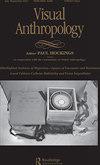Visual and Verbal Semiotics in the Moscow-vs.-Paris Métro
IF 0.3
Q3 ANTHROPOLOGY
引用次数: 0
Abstract
This paper compares the principles of naming métro stations in Moscow and Paris. The database covers 234 Moscow and 305 Paris métro station names. We analyze the station names along different axes. In the case of Moscow, the development of the métro is referred to the periodization of socio-economic national development. This makes it possible to distinguish naming principles and build their hierarchy in each period. In the case of Paris, the chronological principle of the analysis appears less relevant: stations used to be given names relating to the names of surrounding urban spaces at the time of a station’s construction. Initial analysis thus takes city geography into account. For both the Moscow and Paris métros attention is then paid to the etymology of station names. Several thematic groupings of names are found: station names following a geographical principle (naming after a village that used to be located around the place), after a street (or square, park, boulevard, etc.), or an institution near the station; names referring to historical figures (war heroes, politicians, writers, key social groups, etc.) or events, as well as names alluding to national values. Changes in métro station names are of particular interest as they appear to reflect shifts in the country’s political environment. In Moscow, the trend to commemorate the country’s revolutionary past in the long run gave way to geographical naming. In Paris, the opposite trend appears to be emerging, as the initial geographical naming principle seems to be replaced by a more ideological one.莫斯科视觉与语言符号学-巴黎Métro
本文比较了莫斯科和巴黎两个地区的调制站的命名原则。该数据库包括234个莫斯科和305个巴黎的msametro站点名称。我们沿着不同的轴线分析电台名称。在莫斯科的情况下,指的是国家社会经济发展的分期。这使得区分命名原则并在每个时期构建它们的层次结构成为可能。在巴黎的案例中,分析的时间顺序原则似乎不太相关:在车站建设时,车站的名称与周围城市空间的名称有关。因此,初步分析将城市地理因素考虑在内。对于莫斯科站和巴黎站来说,注意的是站名的词源。可以发现几个主题分组:车站名称遵循地理原则(以曾经位于该地点周围的村庄命名),以街道(或广场,公园,林荫大道等)或车站附近的机构命名;涉及历史人物(战争英雄、政治家、作家、重要社会团体等)或事件的名称,以及暗示国家价值观的名称。msamro站点名称的变化尤其令人感兴趣,因为它们似乎反映了该国政治环境的变化。在莫斯科,从长远来看,纪念该国革命历史的趋势让位给了地理命名。在巴黎,相反的趋势似乎正在出现,因为最初的地理命名原则似乎被更具意识形态的原则所取代。
本文章由计算机程序翻译,如有差异,请以英文原文为准。
求助全文
约1分钟内获得全文
求助全文
来源期刊

Visual Anthropology
ANTHROPOLOGY-
CiteScore
1.00
自引率
50.00%
发文量
19
期刊介绍:
Visual Anthropology is a scholarly journal presenting original articles, commentary, discussions, film reviews, and book reviews on anthropological and ethnographic topics. The journal focuses on the study of human behavior through visual means. Experts in the field also examine visual symbolic forms from a cultural-historical framework and provide a cross-cultural study of art and artifacts. Visual Anthropology also promotes the study, use, and production of anthropological and ethnographic films, videos, and photographs for research and teaching.
 求助内容:
求助内容: 应助结果提醒方式:
应助结果提醒方式:


